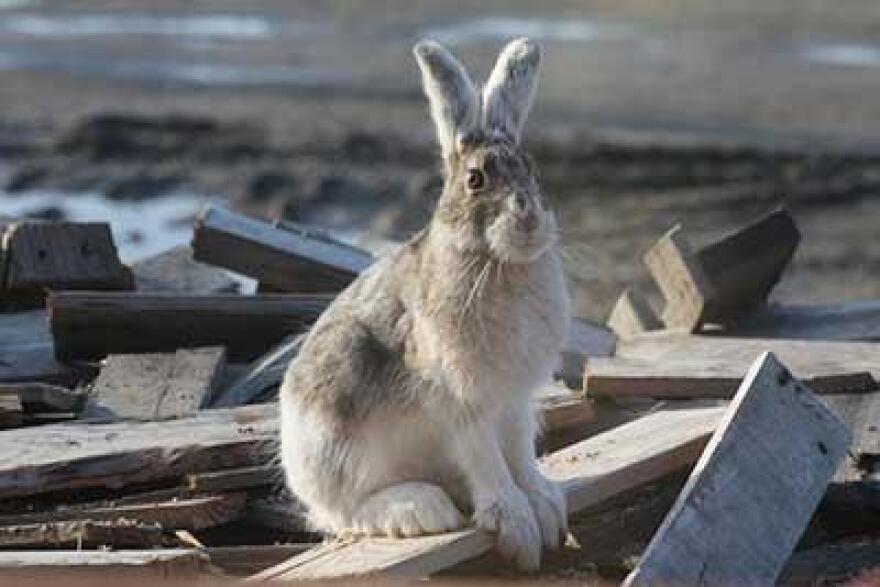The state Fish and Game Department says tularemia is showing up early this year in snowshoe hares around the Interior and areas south of the Alaska Range. So a state veterinarian is warning people who own pets or livestock to watch out for the disease – and for predators that usually prey on the hares.
It’s not unusual for state wildlife and veterinary officials to be getting reports on suspected cases of tularemiaright around now. But Fish and Game veterinarian Kimberlee Beckmen says her office first started getting reports last month of sickly snowshow hares around Fairbanks and Kenny Lake.
“The first calls that I got were about two weeks earlier than we usually see,” she said Wednesday.
Beckmen reckons that’s at least partly because the unusually warm weather that followed the mild winter in those areas allowed the ticksthat spread the tularemia bacteria to thrive.
“I think it’s more of a weather thing,” she said. “It just seems to me that we had such an early spring, and it was so warm, and it just really encourages tick numbers.”
With the early onset of the disease comes the usual advisories for pet owners to make sure their cats and dogs don’t kill sickened hares or scavenge their carcasses.
“Keep an eye on your pets,” she said, “and if you do find that they have gotten ahold of a sick or dead hare, get it away from them.”
Beckmen says pet owners should be careful to wear gloves when removing the varmint from the dog’s or cat’s mouth, or use a plastic bag the same way you’d use one to pick up their poop. The pet owner should then wash up thoroughly, because humans also can catch tularemia. And she says the pet should immediately be taken to a vet if it begins to show signs of the disease.
“They’re going to be running a fever, so they’re going to be lethargic, they won’t want to eat, and they’ll just be very, very weak.”
Despite the warm weather, Beckmen says it’s also odd that the disease is showing up already, because there aren’t many snowshoe hares out there.
“The hares are now at lower numbers – much lower numbers.”
She says the hares are near the point in their 8- to-11-year cycle where the population is bottoming-out. And she says that raises an additional risk for pets, because the predators that feed on hares like lynx have to look elsewhere for prey.
“When the hare numbers drop, the lynx numbers take a year or two to drop, because they have less prey,” she said. “And in the meantime, they are going to be more likely to go after pets.”
Beckmen works in Fish and Game’s Fairbanks office, and she says she’s already gotten the carcass of a hare that tests have shown to be infected. She says anyone who’d like to submit a hare carcass they found or a tick that was on it should go online to the Fish and Game website for more information.
Editor's note: Click herefor the downloadable form to submit a hare carcass or sample to the Alaska Department of Fish and Game. Click hereto find out more about sending a tick to the Fish and Game Department's new Submit-a-Tick program.

